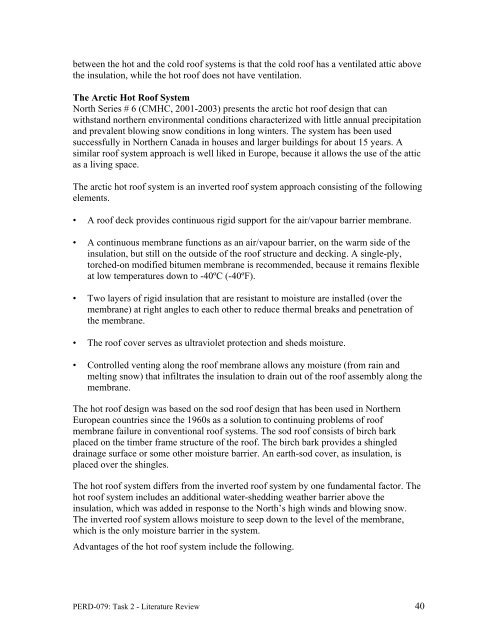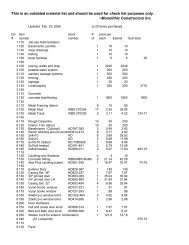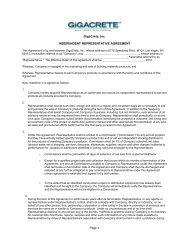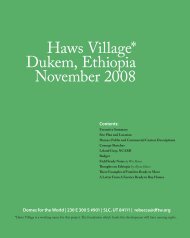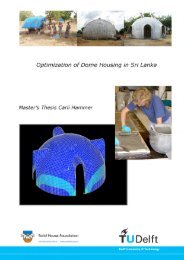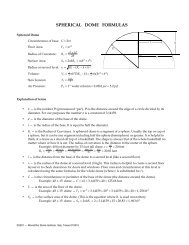Literature Review on Building Envelope, Heating and ... - Beeshive.org
Literature Review on Building Envelope, Heating and ... - Beeshive.org
Literature Review on Building Envelope, Heating and ... - Beeshive.org
You also want an ePaper? Increase the reach of your titles
YUMPU automatically turns print PDFs into web optimized ePapers that Google loves.
etween the hot <strong>and</strong> the cold roof systems is that the cold roof has a ventilated attic above<br />
the insulati<strong>on</strong>, while the hot roof does not have ventilati<strong>on</strong>.<br />
The Arctic Hot Roof System<br />
North Series # 6 (CMHC, 2001-2003) presents the arctic hot roof design that can<br />
withst<strong>and</strong> northern envir<strong>on</strong>mental c<strong>on</strong>diti<strong>on</strong>s characterized with little annual precipitati<strong>on</strong><br />
<strong>and</strong> prevalent blowing snow c<strong>on</strong>diti<strong>on</strong>s in l<strong>on</strong>g winters. The system has been used<br />
successfully in Northern Canada in houses <strong>and</strong> larger buildings for about 15 years. A<br />
similar roof system approach is well liked in Europe, because it allows the use of the attic<br />
as a living space.<br />
The arctic hot roof system is an inverted roof system approach c<strong>on</strong>sisting of the following<br />
elements.<br />
• A roof deck provides c<strong>on</strong>tinuous rigid support for the air/vapour barrier membrane.<br />
• A c<strong>on</strong>tinuous membrane functi<strong>on</strong>s as an air/vapour barrier, <strong>on</strong> the warm side of the<br />
insulati<strong>on</strong>, but still <strong>on</strong> the outside of the roof structure <strong>and</strong> decking. A single-ply,<br />
torched-<strong>on</strong> modified bitumen membrane is recommended, because it remains flexible<br />
at low temperatures down to -40ºC (-40ºF).<br />
• Two layers of rigid insulati<strong>on</strong> that are resistant to moisture are installed (over the<br />
membrane) at right angles to each other to reduce thermal breaks <strong>and</strong> penetrati<strong>on</strong> of<br />
the membrane.<br />
• The roof cover serves as ultraviolet protecti<strong>on</strong> <strong>and</strong> sheds moisture.<br />
• C<strong>on</strong>trolled venting al<strong>on</strong>g the roof membrane allows any moisture (from rain <strong>and</strong><br />
melting snow) that infiltrates the insulati<strong>on</strong> to drain out of the roof assembly al<strong>on</strong>g the<br />
membrane.<br />
The hot roof design was based <strong>on</strong> the sod roof design that has been used in Northern<br />
European countries since the 1960s as a soluti<strong>on</strong> to c<strong>on</strong>tinuing problems of roof<br />
membrane failure in c<strong>on</strong>venti<strong>on</strong>al roof systems. The sod roof c<strong>on</strong>sists of birch bark<br />
placed <strong>on</strong> the timber frame structure of the roof. The birch bark provides a shingled<br />
drainage surface or some other moisture barrier. An earth-sod cover, as insulati<strong>on</strong>, is<br />
placed over the shingles.<br />
The hot roof system differs from the inverted roof system by <strong>on</strong>e fundamental factor. The<br />
hot roof system includes an additi<strong>on</strong>al water-shedding weather barrier above the<br />
insulati<strong>on</strong>, which was added in resp<strong>on</strong>se to the North’s high winds <strong>and</strong> blowing snow.<br />
The inverted roof system allows moisture to seep down to the level of the membrane,<br />
which is the <strong>on</strong>ly moisture barrier in the system.<br />
Advantages of the hot roof system include the following.<br />
PERD-079: Task 2 - <str<strong>on</strong>g>Literature</str<strong>on</strong>g> <str<strong>on</strong>g>Review</str<strong>on</strong>g> 40


